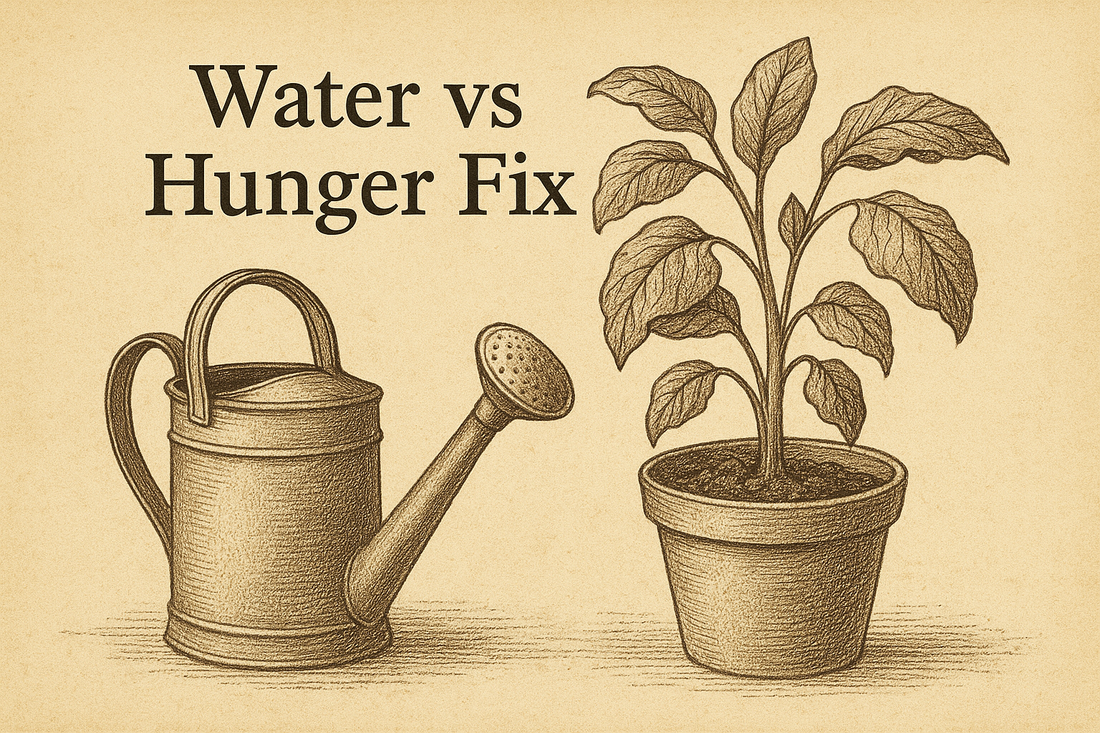
Stop Guessing, Is Your Plant Soggy or Simply Starving?
Water and nutrients fight for the same space
A healthy root zone contains three critical ingredients: air, moisture, and dissolved minerals. Flood that space with water too often and oxygen disappears. Skip feeding cycles and roots run out of building blocks even when the pot looks damp. Symptoms overlap, so it pays to look for details before you prescribe a cure.
Five signs to sort water stress from hunger
| Observation | Likely Cause |
|---|---|
| Soil feels wet, yet leaves droop by noon | Saturation squeezing out oxygen |
| Lower leaves yellow first while new tips stay pale green | Nitrogen shortage |
| Mushy roots with a sour smell | Chronic overwatering |
| Small, rigid leaves with dark veins | Zinc or manganese deficiency |
| White crust on soil surface | Excess salts from repeated feeding without proper flushing |
A quick root inspection confirms the verdict. Healthy roots are firm and cream-colored; brown or translucent tips point to rot.
Two-week rescue protocol
Week one: calm the roots
Mix Doonbeg 3-0-2 at 1 tablespoon per quart of water. Kelp hormones ease shock and molasses wakes dormant microbes. Moisten the soil lightly, then let excess drain. Skip plain water for the next three days.
Week two: rebuild uptake capacity
Dilute RhizoCarbon 2-0-5 at ½ tablespoon per quart. This low-nitrogen carbon blend fuels new feeder roots without forcing leggy stems. Apply once, wait four days, then begin a half-strength routine of High Yield 2-0-4 every ten days.
Practical dosing tips
- Water only when the top inch of mix feels dry to the touch—not by the clock.
- Use room-temperature water to avoid shocking roots.
- Discard runoff so salts do not re-enter the pot.
- Keep foliage dry during evening hours to prevent fungal spots.
Myth check
“Wilting always means the plant is thirsty.”
Roots deprived of oxygen from chronic soaking lose the ability to lift water. Before reaching for the can again, slip the plant from its pot and inspect root color. Brown strands need air first and nutrients second.
Follow the timeline, adjust watering to match seasonal light, and most houseplants rebound within a month. Once new leaves match the size of old ones, resume your normal feeding schedule at half strength, then step back to full rate after two more growth cycles.
